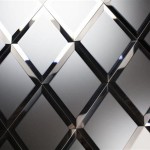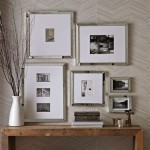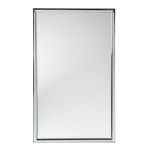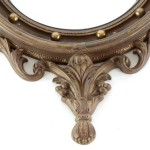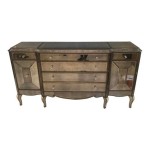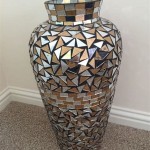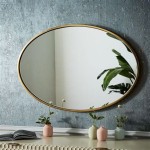How To Put LED Lights Around a Mirror
Adding LED lights around a mirror provides functional illumination and enhances the aesthetic appeal of any room. This article outlines the steps involved in successfully installing LED strip lights around a mirror, providing a clear and comprehensive guide for achieving professional-looking results.
Planning and Preparation
Before beginning the installation, careful planning is essential. Measure the perimeter of the mirror accurately to determine the required length of LED strip lights. Consider the location of the power source and plan the wiring route accordingly. Ensure the chosen power supply is compatible with the LED strip's voltage and amperage requirements. A power supply with slightly higher amperage than required is recommended to prevent overloading.
Choosing the Right LED Strip Lights
LED strip lights are available in various colors, brightness levels, and waterproofing ratings. For bathroom mirror installations, waterproof (IP65 rated or higher) LED strips are recommended to protect against moisture. Consider the desired light color temperature; warmer tones are generally preferred for bathroom mirrors, while cooler tones can be suitable for makeup mirrors or decorative applications. Addressable LED strips offer more control over individual LEDs, allowing for dynamic lighting effects, while non-addressable strips provide a consistent, uniform light output.
Gathering Necessary Tools and Materials
Having the correct tools and materials on hand streamlines the installation process. Typically, the following items are required: LED strip lights, power supply, connecting wires, wire connectors, measuring tape, scissors or a utility knife, rubbing alcohol, adhesive promoter (for certain surfaces), mounting clips or adhesive tape, and a drill (if using mounting clips). Safety precautions necessitate the use of safety glasses and gloves throughout the process.
Cleaning and Preparing the Mirror Surface
Thoroughly clean the mirror surface where the LED strips will be adhered. Use rubbing alcohol to remove any dust, grease, or residue that may interfere with the adhesive. For surfaces with poor adhesion properties, applying an adhesive promoter can improve the bond strength of the mounting tape or clips.
Cutting and Connecting the LED Strip Lights
Most LED strip lights have designated cutting points marked along their length. Carefully cut the strips to the required length using scissors or a utility knife, ensuring the cut is made precisely at the designated point. If connectors are required to join sections of LED strip lights, ensure they are compatible with the specific type of LED strip being used. Follow the manufacturer's instructions for connecting the wires to the connectors and securing them properly.
Mounting the LED Strip Lights
Depending on the chosen mounting method, either peel off the backing of the adhesive tape on the LED strip and carefully stick it to the mirror frame, or use mounting clips. When using mounting clips, position them evenly along the perimeter of the mirror and secure them using screws. Ensure the LED strips are firmly attached to prevent them from detaching over time. For a cleaner look, consider routing the wires along the back of the mirror frame where they are less visible.
Connecting the Power Supply
Connect the wires from the LED strip lights to the power supply, ensuring correct polarity. Follow the manufacturer's wiring diagram carefully. Before plugging in the power supply, double-check all connections to ensure they are secure and correctly wired.
Testing the LED Lights
Once all connections are made, plug in the power supply and test the LED lights. Verify that all sections of the LED strip are illuminated correctly and that there are no flickering or dimming issues. If any problems are detected, unplug the power supply immediately and check the connections for any errors.
Concealing the Wires and Power Supply
For a more polished appearance, consider concealing the wires and power supply. Wire clips or channels can be used to manage the wiring and route it discreetly. The power supply can be hidden behind the mirror or inside a nearby cabinet. Ensure the power supply has adequate ventilation to prevent overheating.
Alternative Mounting Techniques
For mirrors without frames, alternative mounting techniques can be employed. Aluminum channels designed for LED strips can be adhered to the back of the mirror, providing a clean and professional finish. These channels also help dissipate heat, extending the lifespan of the LED strips. Double-sided tape specifically designed for LED strips is another option, ensuring a secure bond without damaging the mirror's backing.
Maintenance and Troubleshooting
Regularly dust the LED strips to maintain optimal brightness. If any sections of the LED strip fail to illuminate, check the connections and the power supply. If necessary, replace the faulty section of the LED strip or the power supply. Avoid using harsh chemicals or abrasive cleaners on the LED strips, as they can damage the protective coating. Always disconnect the power supply before performing any maintenance or troubleshooting.

How To Diy Vanity Mirror With Led Strip Lights

How To Diy Vanity Mirror With Led Strip Lights

How To Diy Vanity Mirror With Led Strip Lights

How To Diy Vanity Mirror With Led Strip Lights

How Do You Put Led Lights On A Round Mirror Ehomemart

How To Diy Vanity Mirror With Led Strip Lights

How To Install A Strip Light On Mirror
How To Design And Install Led Strip Lighting Behind A Mirror Step By Guide

How To Install A Strip Light On Mirror

How To Add Light Poorly Lit Bathroom Vanity Mirror Ers


